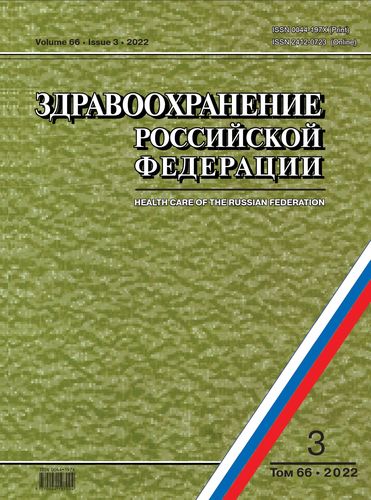Healthcare in Dagestan during the Civil war
- Authors: Manyshev S.B.1
-
Affiliations:
- Institute of Oriental Studies, Russian Academy of Sciences
- Issue: Vol 66, No 3 (2022)
- Pages: 259-263
- Section: HISTORY OF HEALTH CARE AND MEDICINE
- Submitted: 25.10.2024
- URL: https://rjmseer.com/0044-197X/article/view/638018
- DOI: https://doi.org/10.47470/0044-197X-2022-66-3-259-263
- ID: 638018
Cite item
Full Text
Abstract
Based on a wide range of both published and newly introduced documents, the article examines the development of the health care system in Dagestan during the 1917 revolutions and the Civil War. The health care system in Dagestan, not very developed at the beginning of the 20th century, underwent a number of serious changes during the years of radical breakdown in Russian history with a negative impact on the state of public health in the region. The author considers the specifics of the changes in mangement of health care after the February revolution. The measures proposed by the Provisional Government proved inapplicable to Dagestan. Therefore, a special provision was developed, according to which the medical and sanitary case was assigned to a special city commission. During the period under review, there was an acute shortage of qualified medical personnel in Dagestan. In order to fill this deficit, a paramedic school was established in the city of Temir-Khan-Shura at the infirmary. Despite the fact that special manuals were issued to prevent infectious diseases, and also special sanitary commissions, it was not possible to avoid the high mortality rate from typhoid and typhus. This was due to the low effectiveness of antiepidemic measures. The author comes to the conclusion that, despite the difficult political situation, all political players in the region without exception turned to transformations in the field of management, of medical care.
Acknowledgment. The study had no sponsorship.
Conflict of interest. The author declare no conflict of interest.
Received: March 16, 2022
Accepted: April 14, 2022
Published: June 28, 2022
About the authors
Sergey B. Manyshev
Institute of Oriental Studies, Russian Academy of Sciences
Author for correspondence.
Email: msergey1990@gmail.com
ORCID iD: 0000-0002-5276-7743
MD, PhD, Senior Researcher, Institute of Oriental Studies, Russian Academy of Sciences, Moscow, 107031, Russian Federation.
e-mail: msergey1990@gmail.com
Russian FederationReferences
- Ibragimov M.I. Formation and Development of the Health Care System in Dagestan [Stanovlenie i razvitie sistemy zdravoohranenija Dagestana]. Makhachkala: SPRINT; 2012. (in Russian)
- Alikishiev R.Sh. Essays on the History of Public Health in Dagestan [Ocherki po istorii zdravoohranenija Dagestana]. Moscow: Medgiz; 1958. (in Russian)
- Akhmadov T.Z. History of Healthcare and Medical Education in the North-Eastern Caucasus (XIX century – 1940) [Istoriya zdravookhraneniya i meditsinskogo obrazovaniya na Severo-Vostochnom Kavkaze (XIX v. – 1940 g.)]. Rostov-na-Donu; 2014. (in Russian)
- Posadskiy A.V. Medicine in the White South during the Russian Civil War: Structures, Solutions, Everyday Life. Noveyshaya istoriya Rossii. 2020; 10(2): 315–29. https://doi.org/10.21638/11701/spbu24.2020.203 (in Russian)
- Revolutionary Committees of Dagestan and Their Activities to Strengthen Soviet Power and Organize Socialist Construction (March 1920 – December 1921) [Revolyutsionnye komitety Dagestana i ikh deyatel’nost’ po uprocheniyu Sovetskoy vlasti i organizatsii sotsialisticheskogo stroitel’stva (Mart 1920 g. – dekabr’ 1921 g.)]. Makhachkala: Dagknigoizdat; 1960. (in Russian)
- Goncharova S.G. Health management in February – October 1917. Problemy sotsial’noy gigieny, zdravookhraneniya i istorii meditsiny. 2001; (6): 50–3. (in Russian)
- Kogan G.D., Yusupova S.I., eds. Cultural Construction in the Dagestan ASSR: Collection of Documents. Volume I: 1918–1941 [Kul’turnoe stroitel’stvo v Dagestanskoy ASSR: Sbornik dokumentov. Tom I: 1918–1941 gg.]. Makhachkala: Dagknigoizdat; 1980. (in Russian)
- Israpilov A.K.-M. Born of the Revolution. The Activities of the Revolutionary Committees in Dagestan [Rozhdennye revolyutsiey. Deyatel’nost’ revolyutsionnykh komitetov v Dagestane]. Makhachkala: Dagknigoizdat; 1969. (in Russian)
- Dodonov B.S., ed. Journals of the Meetings of the Special Meeting under the Commander-in-Chief of the Armed Forces in the South of Russia A.I. Denikin. September 1918 – December 1919 [Zhurnaly zasedaniy Osobogo soveshchaniya pri Glavnokomanduyushchem Vooruzhennymi Silami na Yuge Rossii A. I. Denikine. Sentyabr’ 1918 – dekabr’ 1919]. Moscow: ROSSPEN; 2008. (in Russian)
- Osmanov A.I., ed. Union of United Highlanders of the North Caucasus and Dagestan (1917–1918), Mountain Republic (1918–1920). Documents and Materials [Soyuz ob”edinennykh gortsev Severnogo Kavkaza i Dagestana (1917–1918 gg.), Gorskaya respublika (1918–1920 gg.). Dokumenty i materialy]. Makhachkala; 1994. (in Russian)
- Kupaygorodskaya A.P. Decrees of the highest bodies of Soviet power on the mobilization of medical workers during the period of war communism. In: Bulgakova L.A., ed. Medicine of Russia in the Years of War and Peace. New Documents and Research [Meditsina Rossii v gody voyny i mira. Novye dokumenty i issledovaniya]. St. Petersburg: Nestor-Istoriya; 2011: 389–406. (in Russian)
- Manyshev S.B. Military medicine of the peoples of the North Caucasus in the first half of the 19th century. Etnograficheskoe obozrenie. 2016; (2): 114–27. (in Russian)
- Dalgat A. In the fire of revolution. Memories [V ogne revolyutsii. Vospominaniya]. Makhachkala: Dagknigoizdat; 1960. (in Russian)
- Dibirov M.A. About the medical reference book of the folk healer Alibutay Sogratlinsky. In: Shikhsaidov A.R., ed. Written Monuments on the History of Dagestan: Collection of Articles [Pis’mennye pamyatniki po istorii Dagestana: Sbornik statey]. Makhachkala; 1989: 100–4. (in Russian)
- Nagieva M.K., ed. History of Healthcare Development in Dagestan in the 20th century. Volume I: 1900 – June 1941. Documents and Materials [Istoriya razvitiya zdravookhraneniya v Dagestane v KhKh v. Tom I: 1900 – iyun’ 1941 gg. Dokumenty i materialy]. Makhachkala; 2015. (in Russian)
Supplementary files










